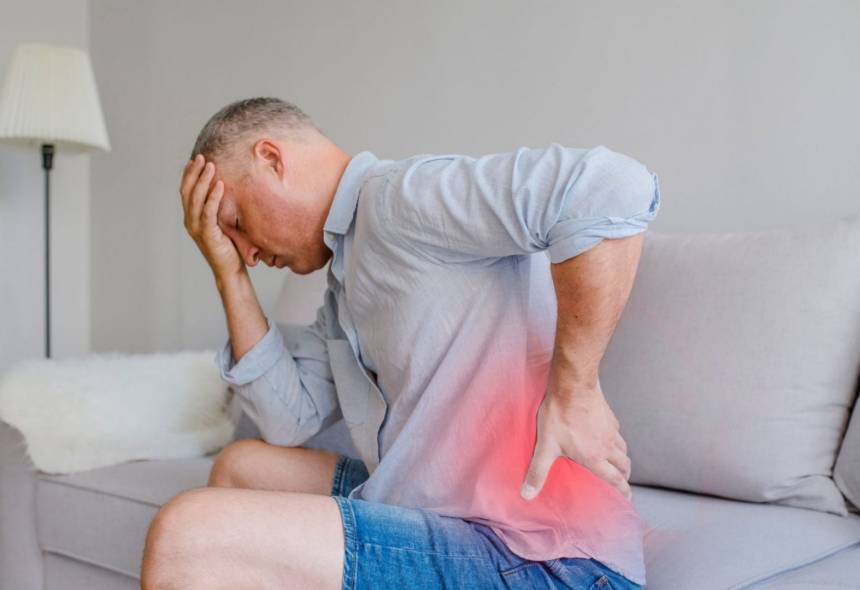Recurring lower back pain and the management of symptoms
Date Posted: 30th March 2023

Lower back pain is a common symptom that many will experience in their lifetime. It is estimated that four out of five adults will develop the problem at some stage with most cases of back pain thought to come and go, disappearing on their own. But where do the symptoms come from and how can we prevent the pain from recurring?
We spoke with Mr Ash Khurana, Consultant Spinal Surgeon at St Joseph’s hospital about the management of recurring back pain.
“Poor posture is one of the main reasons for lower back pain, especially in the modern world. We spend our days looking down at our phones, or sit looking at computer screens without a thought for our posture and positioning. By keeping a dip in the low back when sitting or standing, one can prevent slouching and avoid pain by making the muscles work in the most efficient way. It is about developing a good habit of sitting straight by reminding ourselves repeatedly to begin with and this then stays as muscle memory. This is like learning to type. Once you master the art of keeping good posture, it stays with you for ever. There are other factors affecting back pain, but posture is the one entirely on our own control.”
“There are other reasons behind lower back pain such as performing the same task over and over again especially in a poor posture, or carrying heavy objects in a bent forward posture which increases the force going through the low back discs. Whilst looking down at a phone and sending a text we are putting over a 40lb strain on our upper spine by simply tilting our head. This strain increases as we look down or tilt our head more. Standing or sitting in the same position for long periods of time can cause increased static forces which can again increase the chances of back pain. Alternating sitting and standing would help many people occupied in desk jobs and therefore the height adjustable desks are a great alternative.”
Lower back pain doesn’t just affect the back itself. It can cause pain and discomfort in the legs and occasionally could impact the bladder and bowel function too. Many may not know where to start with treatment for lower back pain. “It is not something that you have to live with. Physiotherapy can be a great place to start, helping you target the troubled areas and by learning the correct techniques for moving the back and improving muscle tone and strength. Yoga, Pilates, and swimming are also great ways to get the body moving. Doing these exercises regularly is the key to help you improve your pain and mobility in the long term.”
If your pain continues there are other options available to help you. “Facet joint or sacro-iliac joint injections, nerve blocks and epidural injections are all ways of managing the pain and pinpointing the pain source.” The injections may not always provide a long-term solution, however, can provide your body an opportunity to heal itself and for many patients an opportunity to implement physiotherapy or a form of exercise to avoid pain recurrence. Surgery is often the final treatment course. “Back or spinal surgery is very personal to the individual and one that you will work closely with your consultant to make the decision about. The consultant would ensure that you have had a through discussion about all treatment options available to your individual case, before considering a surgical route.”
With posture and exercise being in your own control, starting with this day-to-day habit can help you on the journey to overcome your recurring lower back pain.



